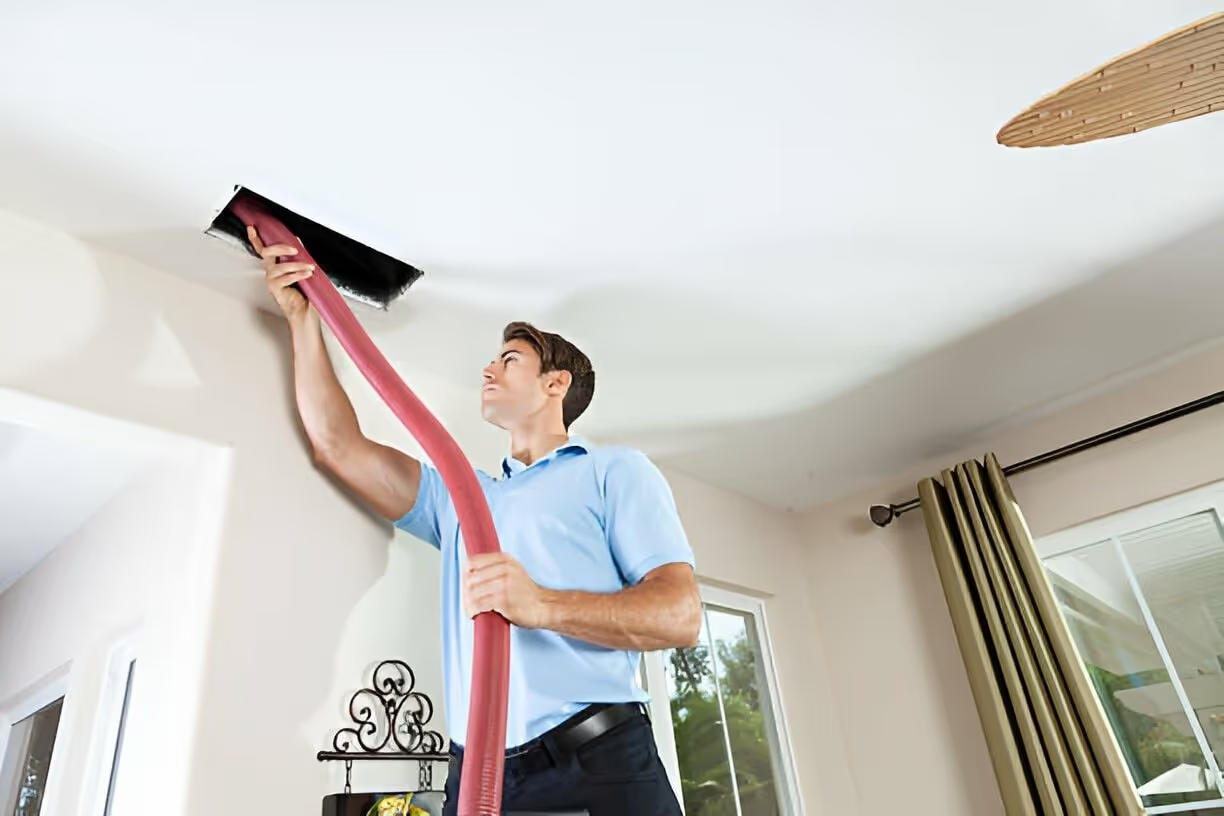Ductwork in Riverview, FL
Ductwork design and installation in Riverview, FL. Learn how sealing, insulation, balancing, and testing boost comfort and efficiency.


Why ductwork matters in Riverview, FL
- High humidity increases the risk of condensation inside ducts, which can lead to mold, reduced airflow, and system inefficiency.
- Warmer outdoor temperatures mean ducts that run through attics or unconditioned spaces can lose more cooled air unless properly insulated and sealed.
- Coastal and near-coastal environments can accelerate corrosion on metal components and worsen air leakage over time.
- All of this translates to higher energy use, reduced comfort, and more frequent service needs if ducts are not designed, installed, and maintained correctly.
Common ductwork issues in Riverview, FL
- Air leaks and poor seals: Detached joints, gaps at boots and registers, and deteriorated tape allow cooled air to escape into attics and crawlspaces.
- Insufficient insulation: Low R-value duct insulation in unconditioned spaces causes thermal losses and condensation.
- Poor layout or sizing: Undersized or poorly routed ducts create uneven rooms, noisy airflow, and excess strain on the HVAC system.
- Contamination and mold: High humidity and dust buildup can lead to biological growth and odors inside ducts.
- Noise and vibration: Thin ducts or long runs without proper supports transmit mechanical noise into living spaces.
- Age-related damage: Flex duct sagging, crushed runs, and corroded sheet metal are common in older installations.
Services: what’s included and how they solve problems
Below are the typical ductwork services offered for Riverview homes, explained in decision-focused terms.
Design and installation of new duct systems
- Custom layout based on the home’s floor plan, HVAC capacity, and local climate demands.
- Proper sizing using industry methods to ensure balanced airflow, efficient operation, and room-by-room comfort.
- Options include rigid sheet metal, insulated duct board, and flexible duct; material selection depends on space constraints, noise goals, and durability needs.
Duct repair and sealing (Duct Sealing/Leak Repair)
- Diagnostics to identify leaks using visual inspection and pressure testing.
- Sealing methods include mastic sealant, UL-rated foil tape, and gasketed connections for durable, airtight joints.
- Sealing ducts reduces conditioned air loss, improves humidity control, and lowers wear on HVAC equipment.
Insulation and noise reduction
- Insulation upgrades (higher R-values, closed-cell wraps) for ducts in attics, crawlspaces, and exterior walls to minimize thermal loss and condensation risk.
- Acoustic treatments (liner, insulated plenum boxes, vibration isolators) to reduce airflow noise and mechanical transmission into rooms.
Airflow balancing and zoning
- Air balancing measures airflow by register and adjusts dampers, register positions, or duct trunks to deliver the correct cubic feet per minute (CFM) to each space.
- Zoning systems add motorized dampers and thermostat zoning for independent temperature control in different parts of the home—useful in two-story Florida homes that heat and cool unevenly.
Duct cleaning and sanitization
- Professional cleaning removes dust, debris, and biological contaminants that accumulate over time, especially where humidity encourages growth.
- Sanitization options target microbial contaminants when moisture or odor issues are present; follow-up measures to address moisture sources are important for lasting results.
Performance testing: leakage and static pressure
- Leakage testing measures how much air is escaping from the duct system to compare against industry standards.
- Static pressure testing evaluates airflow resistance; high static pressure signals restricted ducts, clogged filters, or undersized components.
- Testing provides measurable results so you can see performance improvements after repairs or installation.
Materials and layout options
- Sheet metal: Durable, smooth interior for efficient airflow and low leakage when properly sealed; resists sagging and is preferred for main trunks.
- Flexible duct: Good for tight spaces and lower cost, but must be stretched and supported correctly to avoid sagging and excessive airflow resistance.
- Insulated duct board: Combines insulation and duct structure; useful for short runs in conditioned spaces but requires careful sealing at joints.
- Choice depends on attic space, expected lifespan, noise goals, and maintenance access.
Energy efficiency improvements specific to Riverview
- Sealed and insulated ducts reduce cooling loads during long, hot summers and help control indoor humidity—two major factors in Riverview energy use.
- Improved duct performance lowers run times on air conditioners, reducing strain and extending equipment life.
- Zoning and proper balancing prevent overcooling of underused areas, providing a more targeted approach to comfort and cost savings.
Project timelines and factors that influence them
- Simple repairs and sealing often take a few hours to a day, depending on system accessibility and extent of leakage.
- Insulation upgrades and noise control measures typically require one to two days.
- Full duct redesign and installation for a whole home can take several days to a week, depending on home size, attic or crawlspace conditions, and material choices.
- Permitting, structural access, and addressing related HVAC component issues may extend timelines.
What impacts cost
- System accessibility (attic access, crawlspace height)
- Extent of leaks or damage and need for replacement vs. repair
- Choice of materials (sheet metal vs. flex vs. duct board)
- Additional services (zoning, testing, sanitation, insulation upgrades)
- Local labor and code requirements
Warranties and quality assurances
- Material warranties cover manufacturer defects for ducts and components; durations vary by material.
- Workmanship warranties protect against installation-related problems for a defined period.
- Performance testing before and after work documents results and can be part of warranty validation.
Final considerations for Riverview, FL homeowners
Given local humidity and heat, the most effective ductwork investments are those that prioritize airtightness, adequate insulation, and proper airflow balance. Addressing duct issues proactively improves comfort, reduces energy use, and lowers the risk of moisture-related problems. When reviewing service options, look for evidence of diagnostic testing, clear explanations of material choices, and measurable performance outcomes such as leakage and static pressure results.
Service Areas
Our team is dedicated to providing top-notch services tailored to meet your needs. We pride ourselves on delivering exceptional results and ensuring customer satisfaction.


